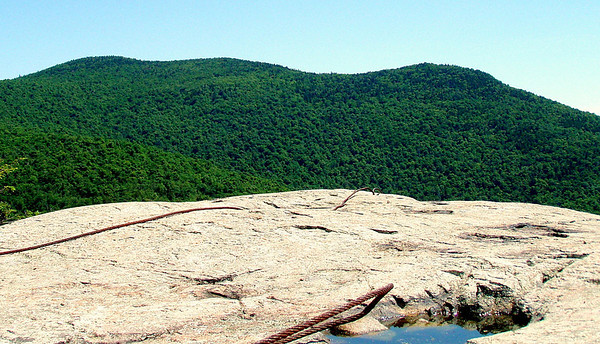RoySwkr
New member
- Joined
- Sep 4, 2003
- Messages
- 4,467
- Reaction score
- 285
The attached images are from the
STATE OF NEW HAMPSHIRE
GENERAL HIGHWAY MAPS
COUNTY SERIES
SCALE 1"=1 MILE
NEW HAMPSHIRE
PUBLIC WORKS AND HIGHWAYS
PREPARED BY THE
NEW HAMPSHIRE DEPARTMENT OF PUBLIC WORKS AND HIGHWAYS
PLANNING AND ECONOMICS DIVISION
IN COOPERATION WITH THE
UNITED STATES DEPARTMENT OF TRANSPORTATION
FEDERAL HIGHWAY ADMINISTRATION
(the cover page at 18" x 24" is too large to scan). From the revision log, the base map was made before 1955 and the last revision to this sheet was 1973 but probably involved roads not summits. Most or all states produced and sold this map series at one time, and the early DeLorme of ME, NH and VT used them as base maps. I don't know how many still bother.
I don't consider this map a primary source as from the elevations the mountains are probably from the USGS 15' quad. Rather it shows which peak the professional cartographers at the highway department took for Faraway Mtn. Although it has been said that the USGS map is ambigious, I consider it significant that the professionals at both the highway department and the planning department (as well as all 3 hikers I know who have listed all peaks in NH and climbed over 1000 of them and hence are expert at with reading USGS maps of NH) all agree on the bump closer to the name rather than the higher one farther away. Every paralegal is entitled to their opinion of the law, but I'd go with the 5-0 ruling of the Court of Appeals
STATE OF NEW HAMPSHIRE
GENERAL HIGHWAY MAPS
COUNTY SERIES
SCALE 1"=1 MILE
NEW HAMPSHIRE
PUBLIC WORKS AND HIGHWAYS
PREPARED BY THE
NEW HAMPSHIRE DEPARTMENT OF PUBLIC WORKS AND HIGHWAYS
PLANNING AND ECONOMICS DIVISION
IN COOPERATION WITH THE
UNITED STATES DEPARTMENT OF TRANSPORTATION
FEDERAL HIGHWAY ADMINISTRATION
(the cover page at 18" x 24" is too large to scan). From the revision log, the base map was made before 1955 and the last revision to this sheet was 1973 but probably involved roads not summits. Most or all states produced and sold this map series at one time, and the early DeLorme of ME, NH and VT used them as base maps. I don't know how many still bother.
I don't consider this map a primary source as from the elevations the mountains are probably from the USGS 15' quad. Rather it shows which peak the professional cartographers at the highway department took for Faraway Mtn. Although it has been said that the USGS map is ambigious, I consider it significant that the professionals at both the highway department and the planning department (as well as all 3 hikers I know who have listed all peaks in NH and climbed over 1000 of them and hence are expert at with reading USGS maps of NH) all agree on the bump closer to the name rather than the higher one farther away. Every paralegal is entitled to their opinion of the law, but I'd go with the 5-0 ruling of the Court of Appeals



